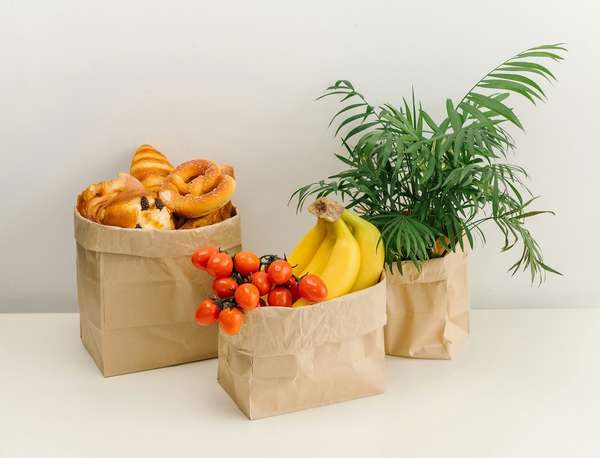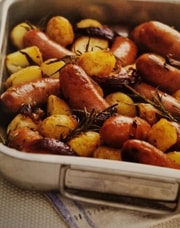
Ever feel like your grocery bill keeps growing while your trolley seems to shrink? You're not alone—and there's a surprisingly simple solution hiding in plain sight on those confusing supermarket shelves.
While grocery prices continue their relentless climb in 2025, baby boomers are actually spending the least on groceries at $170 per week, compared to younger generations who fork out $227 weekly.
But even with more modest spending, 39 per cent of Australians now say grocery shopping causes them financial stress, up from 29 per cent just three years ago.
The good news? There's one strategy that's helping almost half of Aussie shoppers slash their grocery bills by up to 42 per cent, and it doesn't require any special apps, loyalty cards, or coupons.
The simple step that's saving families hundreds
Unit pricing is saving the day, amid persistent price increases, confusing sales tags and clever supermarket strategies all aimed at enticing customers to spend more. This strategy can help Aussie save up to 42 per cent on their weekly purchases.
Unit pricing is simply a grocery labelling system that shows the cost of a product based on a standard unit of measure such as per gram, per 100 grams, per millilitre or per kilo. This allows customers to easily compare prices between multiple brands, regardless of packaging size or sales tactics.
'When unit pricing was included, this increased to 76 per cent, highlighting that unit pricing still remains one of the most valuable tools to save on groceries'
The Choice survey asked grocery buyers to look at product images with and without unit pricing to determine if they selected the best value for money.
'When we showed shoppers product images without unit pricing, only 63 per cent chose the best value product,' Choice Senior Campaigns and Policy Advisor, Bea Sherwood, explains.
'When unit pricing was included, this increased to 76 per cent, highlighting that unit pricing still remains one of the most valuable tools to save on groceries.'
Why this matters more than ever in 2025
The numbers tell a stark story about why every dollar counts at the checkout. Aussies are now spending $178 per week on groceries compared to $168 per week in 2024—that's 6 per cent more than last year and 11 per cent more than in 2023.
Australian households are bracing for higher grocery prices that will add on average $1000 to the yearly bill, with the average household spending $213.64 a week compared with $191.66 in 2024.
Some items have been hit particularly hard. Fruit prices jumped 12.3 per cent in January 2025, while eggs were the hardest hit by supply issues, with avian flu driving prices up by 19.1 per cent. Even staples like bread have increased 3 per cent between January 2024 and January 2025.
Smart unit pricing tips for seniors
Compare the same units—don't mix up per 100g with per kg
Bring reading glasses or use your phone's magnifier for tiny labels
Check both regular and sale prices using unit pricing
Don't assume larger packages are always cheaper
Take a photo of unit prices to compare between stores
Look for unit pricing on shelf edge labels, not just packaging
The hidden problems making it harder to save
The survey found 'almost half of shoppers' are actively using unit pricing to help make ends meet. However, there are growing challenges with the system itself.
'With the cost of living still soaring, many consumers are looking for ways to save money at the supermarket. While our research shows almost half of shoppers are comparing unit prices to help save money, an increase from 2022, we've seen a significant decline in people finding unit prices useful—61 per cent, down from 71 percent in 2022,' Sherwood continues.
'We've also seen an increase in people reporting labelling issues at the supermarket, including inconsistent units of measurement, inconsistent formats, or labels that are too small or difficult to read.'
The research found 38 per cent of Aussie shoppers reported issues with inconsistent units of measurement, another 38 per cent encountered unit pricing text that was difficult to read. Thirty-two per cent of those surveyed reported unit pricing was obstructed or covered.
These problems particularly affect older shoppers, who may find tiny text challenging to read or struggle with inconsistent labelling formats that change from store to store.
Real examples of how unit pricing saves money
Consider this common scenario: you're choosing between a 500ml bottle of olive oil for $8 and a 750ml bottle for $11. Without unit pricing, the larger bottle might seem like better value. But the unit price reveals the 500ml bottle costs $1.60 per 100ml, while the 750ml costs $1.47 per 100ml—making the larger bottle the clear winner.
These small differences add up significantly over time. In response to rising costs, 71 per cent of shoppers now pay attention to supermarket specials and offers compared to 63 per cent in 2024, while a third tend to buy lower-priced supermarket-owned brands.
Why unit pricing matters more now
- Helps you see through confusing sale tactics and package sizing tricks
- Saves up to 42 per cent on grocery bills when used consistently
- Becomes more effective as shoppers learn to use it properly
- Essential tool as grocery prices rise across almost all categories
- Particularly valuable for seniors on fixed incomes
Government steps in to help
The Australian Treasury released a consultation paper in September 2025 seeking feedback on how to strengthen the mandatory Unit Pricing Code to improve price comparisons and crack down on shrinkflation.
The consultation paper proposes expanding the scope of retailers covered, enhancing display requirements, ensuring consistent units of measure for better price comparisons, and introducing civil penalties for breaches, with the goal of helping Australian consumers make more informed purchasing decisions by providing more transparent and consistent pricing information.
'The government's consultation paper to improve unit pricing rules is a positive step towards helping consumers make more informed decisions,' Sherwood says.
'We hope the consultation leads to stronger rules to crack down on supermarkets doing the wrong thing and undermining the consumer's ability to choose the best value product.'
Making it work for you
The key is building unit pricing into your regular shopping routine. Start with items you buy frequently—these small savings compound over weeks and months. Many shoppers find it helpful to take a photo of unit prices when comparing between stores, or to make notes in their shopping list app.
Remember that sale prices can be misleading too—always check the unit price of discounted items, as sometimes the 'special' isn't the best value when you break it down per gram or litre.
More than a quarter of Australians (25.9 per cent) say the cost of groceries will be their most worrisome bill in 2025, but tools like unit pricing can help take back some control over your spending.
Choice supports expanding the scope of the unit pricing code to more retailers, ensuring a more consistent and transparent approach across the board. 'Strengthening the rules and introducing strong penalties would also combat common issues with unit pricing, such as inconsistent units of measurement, or text that is difficult to read,' Sherwood says.
Have you discovered any clever unit pricing strategies that have helped trim your grocery bill? We'd love to hear about your money-saving wins—and any supermarket tricks you've uncovered—in the comments below.
Original Article
https://honey.nine.com.au/money/gro...-to-save/ec172f16-d6c6-453d-a8a5-e47e3213b640
The average cost of groceries per month
Cited text: Baby boomers spend the least each week at $170, followed by Gen X at $190, Gen Z at $222, and Gen Y at $227 per week.
Excerpt: baby boomers are actually spending the least on groceries at $170 per week, compared to younger generations who fork out $227 weekly
https://www.finder.com.au/budgeting/average-grocery-bill
The average cost of groceries per month
Cited text: And Baby Boomers spend the least at $170 per week, suggesting that working adults and/or people with children at home typically have the highest groce...
Excerpt: baby boomers are actually spending the least on groceries at $170 per week, compared to younger generations who fork out $227 weekly
https://www.finder.com.au/budgeting/average-grocery-bill
The average cost of groceries per month
Cited text: According to Finder's Consumer Sentiment Tracker, 39 per cent of Aussies say their grocery shopping is causing them financial stress, up from 29 per cent 3 years ago....
Excerpt: 39 per cent of Australians now say grocery shopping causes them financial stress, up from 29 per cent just three years ago
https://www.finder.com.au/budgeting/average-grocery-bill
Average Grocery Bill | Australian Living Costs—Canstar Blue
Cited text: Our 2025 survey of 2,879 supermarket shoppers found Aussies are spending $178 per week on groceries compared to $168 per week in 2024, that’s 6 per cent more ...
Excerpt: Aussies are now spending $178 per week on groceries compared to $168 per week in 2024—that's 6 per cent more than last year and 11 per cent more than in 2023
https://www.canstarblue.com.au/groceries/average-grocery-bill/
Cost of Aussies’ 2025 grocery shop revealed
Cited text: Australian households are bracing for higher grocery prices that will add on average $1000 to the yearly bill. The average household will spend $213.6...
Excerpt: Australian households are bracing for higher grocery prices that will add on average $1000 to the yearly bill, with the average household spending $213.64 a week compared with $191.66 in 2024
https://au.news.yahoo.com/cost-aussies-2025-grocery-shop-052054374.html
The average cost of groceries per month
Cited text: The food category hit hardest by inflation in January 2025 was fruit 12.3 per cent.
Excerpt: Fruit prices jumped 12.3 per cent in January 2025, while eggs were the hardest hit by supply issues, with avian flu driving prices up by 19.1 per cent
https://www.finder.com.au/budgeting/average-grocery-bill
Average Grocery Bill | Australian Living Costs—Canstar Blue
Cited text: Eggs were the hardest hit by supply issues over the past 12 months, with the avian flu driving up the price by 19.1 per cent , according to the Australian Bur...
Excerpt: Fruit prices jumped 12.3 per cent in January 2025, while eggs were the hardest hit by supply issues, with avian flu driving prices up by 19.1 per cent
https://www.canstarblue.com.au/groceries/average-grocery-bill/
The average cost of groceries per month
Cited text: If we look at just groceries, price increases between January 2024 and January 2025 range from 3 per cent for bread to 12.3 per cent for fruit.
Excerpt: bread have increased 3 per cent between January 2024 and January 2025
https://www.finder.com.au/budgeting/average-grocery-bill
Average Grocery Bill | Australian Living Costs—Canstar Blue
Cited text: In line with the cost at the checkout growing, Canstar Blue’s research indicates Aussies are more discount-driven than they were a year ago and are ta...
Excerpt: In response to rising costs, 71 per cent of shoppers now pay attention to supermarket specials and offers compared to 63 per cent in 2024, while a third tend to buy lower-priced supermarket-owned brands
https://www.canstarblue.com.au/groceries/average-grocery-bill/
Supermarket spending shock: Aussies forking out $1k more a year compared to 2024 on groceries | Compare the Market
Cited text: More than a quarter of Australians (25.9 per cent) say the cost of groceries will be their most worrisome bill in 2025, up 1.1 per cent from 24.8 per cent in August 2024.
Excerpt: More than a quarter of Australians (25.9 per cent) say the cost of groceries will be their most worrisome bill in 2025
https://www.comparethemarket.com.au/news/how-much-australians-spend-on-groceries-2025/







